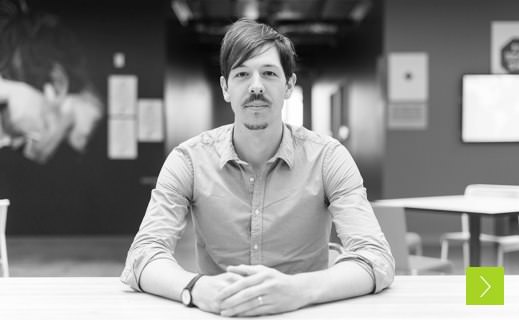Schedule
Three Days of Inspiring Talks and Workshops on Products, People & Platforms.
Products
08:00 ‐ 09:30
Registration
Morning Talks
09:30 ‐ 10:15
The Most Harmful Profession
In the early 1970’s prophetic designer Victor Papanek wrote, “There are professions more harmful than design, but only a few of them.” That’s more true now than it was 40 years ago: Never have so few people, so young, had such direct impact on so many. Our decisions as designers directly affect billions. We give people email apnea—causing people to literally hold their breath. We’ve made social media more addictive than cigarettes with the top minds of our generation working to distracting us, all in the name of monetizing those lucrative eyeballs. But it’s not all bad: To design is to cause behaviour change, and behaviour change is the solution to this centuries top-five diseases. “The Most Harmful Profession” is an exploration of the harm and the hope for design in an Internet-scale world.
10:15 ‐ 11:00
Build for Speed: How to Prototype and Test Any Product in Five Days
The current methodology for building applications is broken. Most teams go through the classic agile pattern: ideate, build, launch, measure, iterate, repeat. Even when executed efficiently, this process stifles innovation under the burden of engineering and product launching. Using real-world examples, Daniel and Jake will show how to test your theses more quickly and increase the overall effectiveness (and happiness!) of your whole team.
11:00 ‐ 11:30
Mid-morning break
11:30 ‐ 11:50
From the Front Lines of Multi-Device Web Design
It’s hard enough to design a great mobile or Web site but what about experiences that span these devices and more? Join Luke for a set of lessons learned designing Web products that attempt to embrace simultaneous and sequential multi-device use. What worked and, more importantly, what didn’t?
11:50 ‐ 12:10
The UX of news: The good, the bad, and the downright ugly
In the last year Martin Belam has helped Trinity Mirror launch two news-related sites, UsVsTh3m and Ampp3d. In this talk he outlines how years of experience designing at places like the BBC and the Guardian, and consuming news, were distilled into designs that were purposefully optimised around the mobile sharing of content.
12:15 ‐ 13:00
Information Entropy
Will information technology affect our minds the same way the environment was affected by our analogue technology? Designers hold a key position in dealing with ever increasing data pollution. We are mostly focussed on speeding things up, on making sharing easier, faster, more accessible. But speed, usability, accessibility are not the main issue anymore. The main issues are not technological, they are structural, processual. What we lack is clarity, correctness, depth, time. Are there conter-techniques we can employ to turn data into information, information into knowledge, knowledge into wisdom?
13:00 ‐ 14:00
Lunch
Afternoon Workshops
14:00 ‐ 17:30
15:30 ‐ 16:00
Mid-afternoon break
Drawing Ideas: Enhance your creative process with quick sketching and visual storytelling
Are you looking for an innovation spark to improve your own UX design process? Have you ever wanted to be a stronger, more confident visual communicator? Is drawing something you wish you could do better? Drawing Ideas is an immersive, hands-on session that combines presentation, individual, and team-based activities designed to unlock your potential for brainstorming creativity through better drawing skills.
Read moreThe Information Architecture of Products
What terms and concepts do you use to deliver your product experience? What organizational structures do you use to present those terms and concepts? To what degree is the meaning you intend through those choices clear to the person for which you intended it? These are the questions to ask yourself when attempting to make a product make sense to others.
Read morePrototyping with origami & Quartz Composer
Origami is an interactive prototyping library used every day at Facebook. It’s a library built on Quartz Composer, a powerful real-time graphics tool. Origami was instrumental in creating Paper, Home, and Messenger — it’s changed the way our team thinks and designs. This hands-on workshop will teach you how to prototype complex interactions with zero lines of code.
Read moreHow to prototype and test your products using Google Ventures design sprints
At Google Ventures, we work on design projects with a huge variety of startups, from Nest to Foundation Medicine to Fitstar to Blue Bottle Coffee. One of the key ways that we help our portfolio companies is through a process that we call a "5 Day Design Sprint." Over just five days, we ideate, prototype, and real-world test products. This process isn’t just for startups – we’ve had a lot of success designing products using sprints at well-established companies (like Google!) too.
Read moreHypothesis Writing: Using Hypotheses to Align Design, Business and Technology
This half-day workshop is a deep-dive into the key method used to manage design in an agile context — the hypothesis.
No one admits it but too often, requirements are just guesses. To cover up this uncomfortable fact, software managers do a vast amount to work on requirements: they pre-plan in painstaking detail, outlining every possible scenario, use case, back-end integration point, and business rule. The end result of all this planning? Too often, it’s disappointment, frustration, and vast sums of wasted money.
Read moreUser Experience Design for the Responsive Web
Whether they realise it or not, every company is in the user experience business. The best products and services have design at their very core. This workshop will delve into how we as designers, developers and product owners can challenge assumptions and influence business strategy to deliver better, more delightful experiences for our users regardless of screen size. Through a series of hands-on activities we will share techniques for exploring and identifying requirements, painting a picture of our users and quickly creating responsive prototypes that we can test and validate.
Read morePeople
08:30 ‐ 09:30
Registration
Morning Talks
09:30 ‐ 10:15
Psychophysics, Qu’est ce que c’est?
Design can only really work when we know the bizarre features of human perception and cognition. The best designers have always understood this instinctively. Science is now beginning to catch up.
10:15 ‐ 11:00
Designing the Good Life: Ethics and User Experience Design
“You cannot not communicate,” psychologist and philosopher Paul Watzlawick once famously said. Similarly, whatever we create as user experience designers influences others - even if we don’t intend it. And as software is eating the world, the domain of our responsibility is rapidly becoming all-encompassing. Layer by layer, question by question, this talk invites you to reflect on the moral dimensions of your work.
11:00 ‐ 11:30
Mid-morning break
11:30 ‐ 11:50
You live and die by your ideas
Designers live and die by their ability to innovate. The problem is we’re expected to generate great, new ideas for our clients everyday. How do you do this in a highly pressurised world? Peter helps global organisations innovate by better understanding their products and the people they serve. With examples from his recent redesign of the airline boarding pass, join Peter as he talks about unleashing your ability to innovate and think disruptively.
11:50 ‐ 12:10
Redesigning For Millions
MailChimp underwent a dramatic transformation in 2013. The entire app got a new look and was made responsive for a mobile, collaborative workflow. Redesigning for millions of customers is scary. With so many moving parts and entrenched customer workflows, how do you move a product forward without leaving users in the dust?
Aarron Walter, director of UX at MailChimp, will share the back story of the project, including the research that led to the redesign, the challenges of the creative process, and the design patterns that made the build out possible on a tight deadline.
12:15 ‐ 13:00
Open for open questions
Many design and usability research methods cater for delving into a focused topic: You set a goal, establish hypotheses, gather data and gain insight to help create the proof, story, a view point, strategy, or whatever you are looking for – within the given budget and time. However, there can be situations where your research may focus too much on individual ‘trees’ that it cannot provide much information about the ‘forest’. For instance, what if you have perfect usability test data to prove the effectiveness of your design, but your client may be more interested to know what types of people would buy the product (and get disappointed to hear that you don’t know)? What if your polite research participants never want to talk with you about negative things about your design? This talk will share a few anecdotes exemplifying the importance of factoring in the space when exploring broader viewpoints to the user research questions, through informal social encounters, serendipitous interactions, and activities that are designed for cross-examining their results.
13:00 ‐ 14:00
Lunch
Afternoon Workshops
14:00 ‐ 17:30
15:30 ‐ 16:00
Mid-afternoon break
Storyboarding: Communicating Your Ideas with Comics & Drawings
Storyboards capture an experience in a visual way. They communicate complex ideas in succinct, understandable ways—whether for planning a feature film or the user experience of an application.
Read moreIntroduction to Content Modelling
Content modelling takes complex subjects and lets people explore them in the way they want. It creates links between information, and allows people to take a journey through data in whatever wibby-wobbly way they choose, across time and space and devices.
Read moreEmotional Design
Although it’s never been easier to create and launch an app, it’s still incredibly hard to stand out from the competition. Usable apps are the norm today, but apps that make customers feel like they’re interacting with a human, not a computer, are a rare breed.
Read moreReality Shared: Collaborative Research Techniques for Effective Design
All too often, critical design and business decisions are based on internal assumptions rather than how the world actually works. Research may be relegated to a few isolated specialists in an organisation, if it’s considered at all. When you have to move quickly and collaboratively, how do you make sure that you and your team have the information you need to to design and build a new product or service that delights your target users and meets your business goals?
Read moreDo Androids dream of a great UX?
More than a billion people now use the Android platform. It’s the platform of choice for more than 68% of EU5 smartphone owners, and dominates markets such as Germany and Spain with shares of 75% and 86% respectively. In fast growing economies such as India and Brazil, Android penetration is now approaching 90%.
Read moreBecome a better UX designer through code
The web is a fluid and inherently flexible medium - to design effectively for it you need to understand it better. In this hands-on workshop we will look to level up your HTML & CSS skills to learn how you can create responsive prototypes and re-usable pattern libraries for your web projects. We’ll explore how to create layouts that flow beautifully from tiny screens to large ones and how to design responsive grids from the content-out. Through practical examples we’ll discuss the benefits of developing responsive pattern libraries including when and how to use them.
Read morePlatforms
08:30 ‐ 09:30
Registration
Morning Talks
09:30 ‐ 10:15
The Physical Web
- We’re thinking about the IoT all wrong, there is likely a backlash coming
- The IoT is focusing on coordination when discovery is the killer ability
- This is a fundamental rethinking of ‘the web’, moving from virtual to physical interaction
- Every device can contain a URL, them means anything and offer more information or interaction
- Companies are likely going to try to own this, under the guise of security, circumventing the open nature of the web
- The W3C needs to get off its ass and do something about this. If it waits to copy an industry standard it will be too late.
10:15 ‐ 11:00
Beyond progressive enhancement
The time is 2020. The inflection point has long passed. Most web traffic is now coming from some manner of portable device. And if Google Chairman Eric Schmidt (and many others’) predictions have come true, we will have truly reached the time where “...[technology] will just be seamless. It will just be there. The web will be everything, and it will be nothing. It will be like electricity.”
If “seamless” is what we’re after, we have a long way to go :-) This presentation will challenge us to think about the role of the web going forward. What steps can we begin to take to create seamless interactions between the web and other platforms? What would a seamless web even look like? How can we ensure the web remains strong amidst all the new technologies that are on the way?
11:00 ‐ 11:30
Mid-morning break
11:30 ‐ 11:50
“I HATE THIS… ★★★★★” How EVO evolved the digital magazine - and why it resulted in a revolution
Clearleft worked with Dennis Publishing in 2013 to design a new form of digital publishing product. It tested well with users, but on release the product caused confusion amongst existing subscribers and resulted in bi-polar reviews and strong opinions. Rob Boynes and Ben Sauer will explain what happened and examine why the product is so important in publishing user experience - an industry where traditional magazine subscriptions are falling fast and replacement revenue is elusive to many.
11:50 ‐ 12:10
Making meaning in an Internet of Things
Something exciting has been happening to our everyday objects. Things that were once silent and static can now sing, glow, buzz and be tracked online. Some are constantly listening for sounds, sights and touches to translate into meaningful inputs. Others have the ability to learn, refining their behaviors over time. They can be connected to one another as well as the Internet. As people continue to interact with data in all aspects of life, they will expect their digital devices to deliver real-time, visualized, networked feedback. As designers, the emergent Internet of Things presents a juicy opportunity to pioneer new territory in rich interaction, but it also can backfire, filling people’s lives with more frustrations over technology than ever before. In this talk, Carla Diana, who works on smart objects in her studio and the award-winning firm Smart Design, will share stories from the front lines. She will explore both the opportunities and the challenges that come with designing interactive hardware/software products and ecosystems through a series of case studies and design experiences.
12:15 ‐ 13:00
Designing how cities happen (after the internet)
As people, buildings, infrastructure and objects lead increasingly connected lives, we now have an historic opportunity to reshape our cities. While the ‘smart city’ movement has focused on making urban processes more efficient—sometimes necessarily—there are more interesting, and arguably more radical, possibilities that might shift how cities actually happen—how citizens engage with city-making, for instance, and how we might enable systemic changes within and across cities. As a ‘fugitive from UX’ working on major urban projects worldwide, Dan will share insights and experiences into how the dynamics of the internet are beginning to in turn transform the dynamics of cities and buildings.
13:00 ‐ 14:00
Lunch
Afternoon Workshops
14:00 ‐ 17:30
15:30 ‐ 16:00
Mid-afternoon break
Mobile Input
Being able to access content on mobile devices is only half the battle. People also need to participate. And since they’re likely to have their mobiles with them all day, there’s plenty of opportunities to capture their input. But how?
Read moreMagic Pixie Wonder Dust 3000 (Enterprise Edition): Designing Motivational Experiences
In this workshop, you will learn why “engagement” is bullshit; why there are no architecturalisation gurus (and soon will be no gamification ones), but designing for motivation is here to stay; and what we as user experience designers can really take from games and play.
Read moreThe Collaborative UX Designer’s Toolbox
Are you challenged by unclear, conflicting and changeable product mandates?
Frustrated by other team members who just don’t seem to “get it?”
Do you struggle to find a sustainable pace where you can deliver what your team needs to move forward and still have a little time to think ahead?
Read moreE-Sketching for Interaction Prototyping
E-Sketching is a tool for conveying and capturing the right level of information as quickly as possible. When designing for interactive systems that have both a physical and a digital component there is great value in bringing sketching off of the notepad and realising certain aspects of the interaction in rough form early and often. In this workshop participants will be introduced to a set of Arduino-based tools and be challenged to create a game or product that incorporates a variety of physical interactions.
Read moreResponsive Content Modeling
Just as a Sitemap describes the hierarchical structure of a website, Content Models describe all of the content types on the new, target site, the elements of each, and prioritizes the type of content that ought to appear on a specific page type. It helps us define the content creation, design, and user experience concepts for the new site. This is especially important for the responsive web: because layout and user context is constantly changing, we have to make sure that content priorities are represented consistently across browsing platforms.
Read moreTaxonomy for App Makers
We currently live in a time where at least one in every five people worldwide owns a smartphone. On average, each of those individuals spends 80% of his or her connected time in native applications. And yet: app makers all too often continue to focus design resources on a single flagship platform, content to cobble together an after-the-fact follow-up for the remaining market share.
Read moreHere's what others are saying about UX London
-
"Thanks again to @clearleft and crew for organizing one of the best conferences I have been to in a long time! #uxlondon"
 Josh Brewer
@jbrewer
Josh Brewer
@jbrewer
-
"Back to work after 3 days of inspiration during #uxlondon. Thank you @clearleft for a fantastic conference!"
 Gabriel Svennerberg
@Svennerberg
Gabriel Svennerberg
@Svennerberg
-
"Awesome time at #uxlondon, met some great people and learnt a lot. Very inspiring. Thank you organisers!"
 Lorraine Paterson
@lorraine_p
Lorraine Paterson
@lorraine_p



































